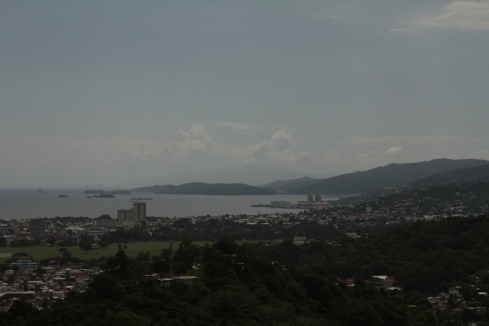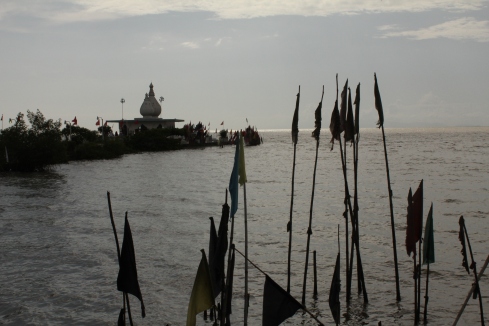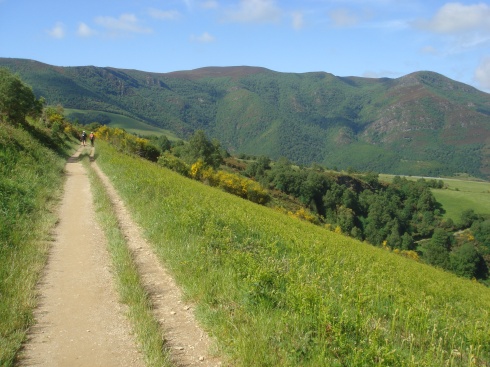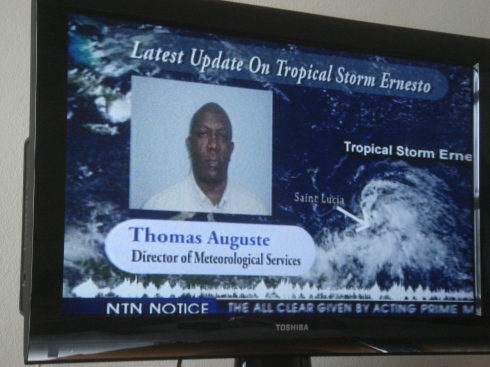War movies are a tricky thing to make and to appreciate. The best ones are often anti-war, for war is not a pleasant thing, but at the same time they have to be able to keep the audience engaged, either through entertaining or by making people think. It’s a difficult balance to keep and not many film makers are able to pull this off successfully. Here’s my top eleven of the best war movies of all times. Because why have ten, when you can do eleven.
11. The Hurt Locker
Before Kathryn Bigelow went down the torture-is-good-for-America rabbit hole, she made the rather excellent The Hurt Locker. Winner of the Academy Award for Best Picture and beating her ex-husband’s Avatar at the pip, this is one of the most intense movies on the list. Bigelow, who got her action movie street cred with the 1991 Point Break about bank-robbing surfers, brings the story of a bomb disposal expert to nail-biting life. Hitchcock once explained how to create suspense with the example of two men having a conversation. In the first version of this story the men speak for five minutes, when suddenly a bomb explodes at the end of the scene. No suspense. In the second version, the audience is shown the bomb at the start of the conversation, ensuring you move ever closer to the edge of your seat as the trivial discussion continues. Ergo, suspense. The Hurt Locker is 131 minutes of unbearable moments waiting for that bomb to go off.
—
10. Inglourious Basterds
In all its mis-spelled gloury this is Quentin Tarantino’s take on the swashbuckling World War II romp, a la Kelly’s Heroes. I find Tarantino one of the more frustrating figures in my movie-going life. I fell in love with his work in the nineties when I was studying film and I thought Reservoir Dogs and Pulp Fiction were the most refreshing thing to come into movies in a long, long time. Since then, each new movie by him fills me with equal parts of pleasure and disappointment. Pleasure at the sheer (and always growing) skill he brings to making them. Disappointment that he is still stuck in the nineties modus operandi he set with Pulp Fiction and Jackie Brown: Take a genre. Distill main character and plot cliches. Add a dash of the unexpected. Wink at the audience.
Inglourious Basterds follows that blueprint to a tee. We have the band of brothers made up of quirky stock characters. The impossible mission to execute. The over the top rewriting of history. And Brad Pitt speaking in hilariously atrocious Italian. Tarantino shows his genius as a film maker in two scenes. One a chat between a French peasant hiding a Jewish family and the one of a kind Colonel Hans Landa. The other a tense scene set in a wine cellar where any moment the heroes may blow their cover. Brilliant pieces of film making, but at the end of each Tarantino movie I can’t help but wonder what would happen if he ever threw his rule book out the window.
—
9. The Longest Day
They don’t make them like they used to. In the first few decades after World War II, the movies that came out were often star-studded vehicles giving wide panoramas of the main battles and events that shaped history. To me The Longest Day is the best example of this genre. Shot in black and white and released in 1962 it tells the story of the D-Day invasion and the battle for the Normandy beaches and hinterlands that set up the final defeat of the Nazi regime. It’s also a who’s who of famous actors of the day (a cinematic Live Aid if you will) with John Wayne, Henry Fonda, Robert Mitchum, Richard Burton and Sean Connery among others gracing the screen. It was one of the first movies we had on video at home (having recorded it off the television) and I must have seen it at least a dozen times as a teenager. Filled with iconic scenes, from the interminable waiting for the weather to turn, to the first sight of the invading fleet by a lone German watchmen, The Longest Day is 3 hours of cinematic history.
—
8. The Thin Red Line
From the great spectacle of The Longest Day we now make a complete U-turn to the introspection that’s offered by Terrence Malick’s war movie. Though not bereft of impressive battle scenes itself, Malick is much more interested in the experience of the individual soldier. As a viewer, instead of being treated to wide aerial shots, you find yourself crawling through the grass on far away Pacific islands as contemplations on the meaning of life pass through the narrator’s head. It’s an almost a dreamlike child’s perspective (which Malick would later perfect in his 2011 masterpiece Tree of Life) and it makes you aware of the incongruity of so much bloodshed in such beautiful, earthly surroundings.
—
7. De Aanslag (The Assault)
The winner of the Academy Award for Best Foreign Picture in 1986, this Dutch movie tells of the assasination of an NSB officer and the repercussions this had during the war and in the decades following. It is based on the book by Harry Mulisch, which I read in high school and is one of many excellent World War II works by Dutch authors in the first half a century after the war. It is not your typical story of great battlescenes and brave heroism. Instead, it explores the sometimes depressingly commonplace reasons that led people to make the choices they made and the terrible consequences these had along the line. War is not always a tale of great good versus great evil. It is one of questionable people caught up in their own actions.
—
6. L’Armee des Ombres
Many war movies deal with the raw images, the intense fighting scenes and the unbearable tensions of life at its most violent. Then there are movies which explore the opposite, for after war often comes occupation and continuing the fight becomes an excercise in subterfuge instead of muscle power. Jean-Pierre Melville’s Army of Shadows is one of the most stylish and memorable explorations of this quiet fight, focusing on the French resistance during World War II. Melville, who is mostly known abroad for his ultra suave Le Samourai, a movie about a lone hitman, which proved an inspiration for Tarantino and the like decades after its 1967 release, here delivers a film that shows the extreme courage required to continue the struggle from the shadows. There are many powerful scenes where someone’s life hangs on the ability to keep emotions from showing up under pressure. One scene has stayed with me. In it a member of the resistance has been taken prisoner and is brought to an empty ground. A machine gun is lined up on one side. The prisoners are told that if they reach the other side alive they will be spared. Do you accept the rules laid down by the Germans, run and perhaps live another day or do you not and die.
—
5. Grave of the Fireflies
Whoever out there still thinks that cartoons are only for kids, should immediately find a copy of Grave of the Fireflies. This is one of the most heartbreaking movies I have ever seen. It follows two children during the final months of World War II as they struggle to survive in a devastated country. After their parents pass away they leave their fire-bombed home town and stay with their aunt in the country. But food is scarce and the scarcity makes people harsh. The two young boys are sent away and find refuge in an abandoned cave. There they try to stave off starvation, but life is increasingly difficult, only the light of the fireflies keeping them company. This is not a story with a happy ending, but it is exquisitely told and beautifully animated.
—
4. Full Metal Jacket
This movie to me is the Abbey Road of film. One half is as brilliant as cinema gets, the other while not bad by any means (there’s no Octopus’s Garden here) is never able to live up to the promise of the first. To speak of the better half first. Kubrick’s Vietnam war drama, starts off in bootcamp. In the first few minutes every new soldier’s personality is stripped from him as his hair is shaved off and he is put in army garb, housed in an army barrack, living by army rules. The genius is in the way that Kubrick throws us into the same state of confusion as these recruits. For the first fifteen minutes or so, it is difficult to make out the individual characters as they are battered by the inspired expletive-filled monologue of the drill instructor. Slowly, they begin to take on personality, but quickly danger creeps in as one of the recruits breaks under the pressure. Then the scene changes and we are in Vietnam. From this point on the movie slips into a more conventional mold, with fighting scenes highlighting the futility and violence of war. Still good, but not as magnificent as its opening.
—
3. Das Boot
Three hours of sweaty, nervous men, cooped up inside the claustrophia inducing hull of a German submarine, or four hours if you’re lucky enough to have the mini-series version instead of the theatrical cut. It’s hard for me to explain why this movie is so good. It’s a bit like trying to explain my love for Lawrence of Arabia: three-and-a-half hours of desert. For some reason that doesn’t quite do it justice. Das Boot is a German movie about the crew of a U-boat prowling the Atlantic for prey, then becoming the prey itself. This is an expertly made movie, by a director who knows how to create suspense and hold it to an agonizing degree as one depth-charge after another explodes and bolts start coming loose at the bottom of the sea. The movie was directed by Wolfgang Petersen, who would later be corrupted by Hollywood and torpedoe what was left of his own career with the dismal Troy, but here he shows what movies he can make.
—
2. Apocalypse Now
One of the movies that made me love movies. I first saw Apocalypse Now late one night on German television. Where I grew up we had two (later three) Dutch channels, which rarely showed any movies, and three German ones that frequently did. Unfortunately they did so in German, so my first exposure to the famous Marlon Brando scene ended with ‘Das Grauen. Das Grauen’ instead of ‘The horror. The horror.’ Nevertheless, I fell in love with it. This is just a war movie in the same way that the Odyssee is just about the return leg of a holiday trip. Coppola took Conrad’s novel, used Vietnam as a backdrop and then elevated it to something epic, something dreamlike, a journey up the river and into the heart of darkness that lies within all of us. Many scenes stand out, the famous helicopter attack to Wagner’s Ride of the Valkyries, Robert Duvall at the beach and the surreal sound and light shows of the USO performance and the bridge where American influence ends. The movie comes in a redux version as well these days, which adds a scene set on an old French plantation and a second one with the girls from the army show. They fill out more details of the story, but in my opinion the original version is the way to go. It is much more tightly pace and leads inexorably to its jungle climax. A great movie. Even in German.
—
1. Come and See
Which brings us to number one. This is a movie that I hadn’t seen until a few years ago. I had never even heard of it before, even though it came out in 1985. Made by the Russian director Elem Klimov, it follows a young boy as he wanders through the Belarus countryside at the height of the German occupation. He joins a local band of partisans but gets separated from them during a bombing raid. He tries to go home, but finds no one there, and searches for a nearby island in the swamp where he hopes they could be hiding. As he runs away to leave his home behind, the camera swoops back ever so briefly revealing the massacred bodies piled up behind the building, before rejoining the running boy. It’s one the many moments that stay with you long after the film has finished. As the boy continues his journey he ages visibly in front of the camera, turning from a naive youth into an old man who has seen too many things. The movies culminates in an extraordinary scene in which a German command burns down a village (one of 628 to have suffered this fate according to the closing titles). Come and See was released in the Soviet Union on the fortieth anniversary of the Soviet victory in the war and was a huge box office hit there. It deserves to be seen much more abroad as well.
—
Honorable mentions
Movies that didn’t make the cut but are worth watching nonetheless.
Flags of our Fathers / Letters from Iwo Jima. Two Clint Eastwood directed movies centered around the same battle, showing opposing perspectives. The juxtaposition makes for interesting viewing.
Der Untergang (Downfall). As famous these days for its internet meme, this movie focusing on the last days of Hitler’s life paints an intriguing portret.
Saving Private Ryan. Watch it for the first ten minutes as the D-Day landing unfolds in cinematic wizardry never seen before. Especially notable for its editing. The rest of the movie is a bit of a waste.































 You are in a large cave. In front of you is a dragon.
You are in a large cave. In front of you is a dragon.